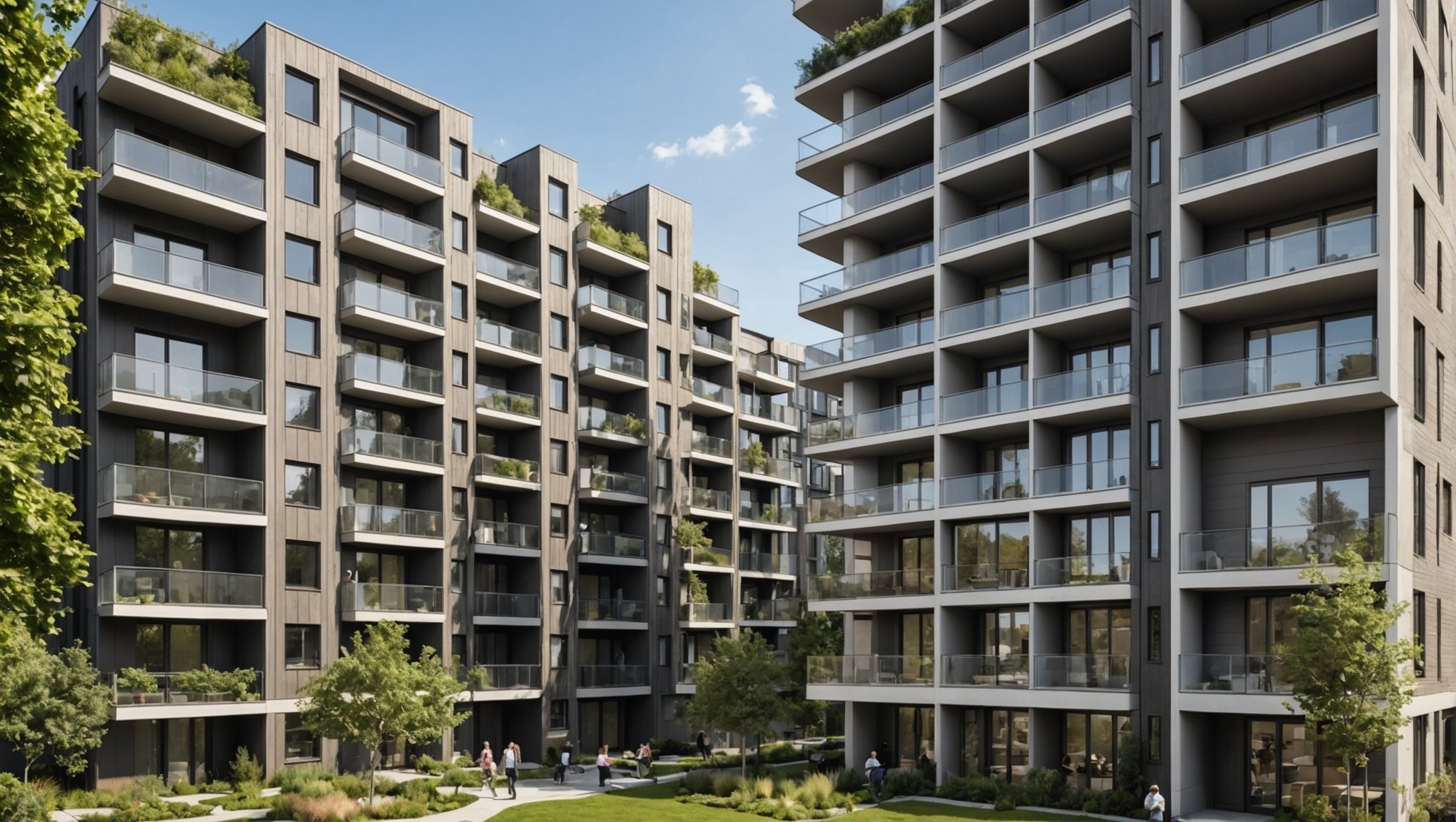Understanding Air Quality Challenges in High-Density Living
Living in densely populated areas often exacerbates common air quality challenges. With numerous households within close proximity, indoor air pollution can become a significant issue, affecting residents’ daily lives. One primary concern is the limited ventilation in high-rise apartments, which can result in the accumulation of pollutants. This includes cooking fumes, tobacco smoke, and volatile organic compounds from cleaning products. The lack of airflow allows these pollutants to linger, potentially leading to adverse health effects.
Urban environments present unique obstacles for maintaining good indoor air quality. Buildings are often surrounded by high traffic areas, contributing to the infiltration of outdoor air pollutants like nitrogen dioxide and particulate matter into indoor spaces. Additionally, construction activities prevalent in cities can release dust and other harmful substances. As a result, residents may experience a decline in air quality without even stepping outside.
Also read : Top Strategies for Seamlessly Incorporating Public Art into New Development Projects
The health risks associated with poor air quality in densely populated areas are substantial. Prolonged exposure can lead to respiratory conditions such as asthma, aggravated allergies, and even cardiovascular problems. It’s crucial to mitigate these challenges through effective ventilation systems, use of air purifiers, and regular monitoring of air quality to ensure a healthier living environment for urban dwellers.
Innovative Technologies for Improving Air Quality
In today’s ever-evolving world, air purifiers have become essential in enhancing air quality. These devices utilise advanced filtration systems, which often include multi-stage filters capable of capturing microscopic pollutants and allergens. From HEPA filters to activated carbon, modern filters efficiently remove harmful particles, ensuring cleaner air.
Topic to read : Top Strategies for Ensuring Optimal Indoor Air Quality in Shopping Malls
With the rise of smart home technology, air quality management is more proactive and efficient. Smart air purifiers can monitor pollution levels in real-time and automatically adjust their operation to maintain optimal air quality. Integration with other smart devices allows users to control and monitor their air purifiers through mobile apps, providing convenience and peace of mind.
Considerations of new technology can be understood through insightful case studies. For instance, homes equipped with smart air purification systems in urban areas have reported a remarkable reduction in indoor pollution, leading to improvements in health and wellbeing. These success stories highlight how these innovative technologies can be practical game changers.
The combination of robust filtration and smart home connectivity offers significant benefits. Users can enjoy healthier environments, improve their quality of life and make informed decisions about their home’s air management.
Practical Tips for Residents to Enhance Indoor Air Quality
Enhancing indoor air quality doesn’t have to be complicated or costly. A few simple adjustments can make a significant difference, promoting a healthier living environment.
Simple Changes for Better Air Quality
Begin by evaluating household practices. Improving ventilation is crucial. Regularly opening windows to allow fresh air in can significantly reduce indoor pollutants. Use eco-friendly cleaners, as harsh chemicals can degrade air quality. Regular vacuuming and dusting help in minimizing dust and allergens.
Incorporating Plants for Natural Air Purification
Adding indoor plants not only beautifies the space but also contributes to air purification. Spider plants, peace lilies, and snake plants are renowned for their ability to filter air contaminants. These plants efficiently absorb toxins and release oxygen, making them ideal for enhancing indoor air quality.
Regular Maintenance Practices
Maintaining your HVAC system is pivotal for good air quality. Change filters every few months to ensure the system runs efficiently. Routine inspections help in identifying issues that could compromise air quality. Clean vents and ducts to prevent dust buildup and ensure that air circulates effectively throughout your home.
By following these indoor air quality tips, residents can create a more refreshing and healthier living space.
Strategies for Property Managers and Community Initiatives
In today’s environment-focused world, the importance of community efforts in improving overall air quality cannot be overstressed. Property management plays a critical role in this context, acting as a bridge between residents and sustainable living practices.
Property managers are encouraged to adopt initiatives that emphasise collective health strategies. These could include installing air purifiers in communal areas and implementing green spaces that contribute to better air quality. Organising regular community meetings on topics like waste management and eco-friendly practices can bolster community engagement. Engaging residents in recycling programs and encouraging the use of public transportation over personal vehicles are practical steps towards a cleaner environment.
The role of policy and regulation in advancing air quality is paramount. Regional policies mandating strict air quality standards push property managers to maintain healthier environments. Compliance with regulations such as setting limits on permissible smoke emissions and enforcing policies on vehicle-free zones within residential areas are crucial strategies. By following these policies, property managers not only adhere to regulatory standards but also promote a culture of collective health within their communities.
Ultimately, effective property management involves a mix of proactive strategies and regulatory adherence to foster a community that prioritises and achieves improved air quality.
Eco-Friendly Practices to Maintain Air Quality
Incorporating sustainable living strategies is crucial for enhancing indoor air quality and ensuring a healthier environment. Eco-friendly practices such as using non-toxic cleaning materials and installing air-purifying plants contribute significantly to reducing indoor pollutants. These practices are fundamentally aimed at creating spaces that support health and well-being.
Implementing green building standards in new developments offers numerous benefits. These standards focus on using materials that minimize pollutants, thus ensuring better air quality. Green buildings are also designed to optimize natural ventilation and light, reducing the dependency on artificial systems. Such practices not only improve air quality but also reduce energy consumption, aligning with overall sustainability goals.
Urban areas have seen various successful eco-friendly initiatives in residential settings that serve as a model for sustainable living. For instance, developments adhering to green standards often incorporate energy-efficient systems and use recycled materials, showcasing the practicality of these initiatives. Such projects highlight the impact that conscientious planning can have on the environment and public health.
By embracing these methods and standards, we not only improve air quality but also promote broader ecological benefits, ensuring a sustainable future.
Expert Opinions and Current Research Findings
In recent research studies focused on air quality, significant advancements have been made in exploring effective improvement strategies. These studies highlight the role of innovative technologies and urban planning in mitigating pollution. For instance, one study investigated green infrastructure, such as urban forests, showing a substantial reduction in pollutant levels.
Experts in environmental health emphasize the importance of multi-faceted approaches in improving air quality. Dr. Jane Thomson, a well-known urban planner, suggests integrating smart sensors and predictive modelling to monitor pollution levels more accurately. Such technologies can help cities respond promptly to air quality issues, which can be further supported by policies aimed at reducing vehicle emissions.
Looking ahead, future air quality trends point towards sustainable urban living solutions. With increasing urbanisation, there’s a growing need for implementing comprehensive air quality management systems in high-density areas. This includes promoting alternative transportation, such as cycling and public transit, and increasing green spaces within city environments.
By leveraging the insights from these studies and expert opinions, we can adopt more strategic and efficient measures to enhance air quality in urban settings. Embracing these innovations holds the promise for healthier urban environments and improved quality of life for city dwellers.
Challenges and Solutions for Ventilation in Densely Populated Areas
Densely populated areas encounter significant challenges related to ventilation strategies. Key issues include limited space, increased pollution, and restricted airflow due to high building density. Urban air dynamics are complex, often leading to stagnation and poor air quality, which can have adverse health effects on residents.
Addressing these challenges requires innovative airflow management techniques. One effective solution is the implementation of green rooftops and vertical gardens. These not only enhance air circulation by releasing oxygen but also filter pollutants, thereby improving urban air dynamics. Additionally, creating ventilation corridors—strategically located open spaces between buildings—can facilitate natural wind flow, reducing air stagnation.
Urban design plays a crucial role in determining the effectiveness of ventilation. Designing buildings with direct alignment to prevailing winds allows for the natural flow of air through urban areas. This minimizes the reliance on mechanical ventilation systems and optimizes natural cooling. Moreover, employing reflective surfaces and light-coloured materials can reduce heat absorption, further enhancing the effectiveness of natural ventilation.
By adopting these strategies, urban areas can improve air quality and resident comfort, demonstrating a commitment to sustainable, health-conscious living environments.






